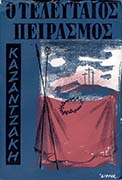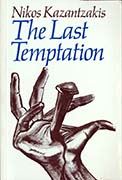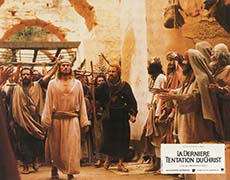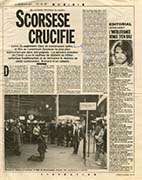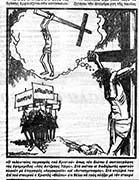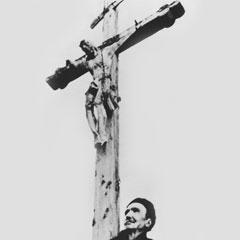Nikos Kazantzakis
1883-1957
Nikos Kazantzakis was born in Heraklion, Crete, when the island was still under Ottoman rule. He studied law in Athens (1902-06) before moving to Paris to pursue postgraduate studies in philosophy (1907-09) under Henri Bergson. It was at this time that he developed a strong interest in Nietzsche and seriously took to writing. After returning to Greece, he continued to travel extensively, often as a newspaper correspondent. He was appointed Director General of the Ministry of Social Welfare (1919) and Minister without Portfolio (1945), and served as a literary advisor to UNESCO (1946). Among other distinctions, he was president of the Hellenic Literary Society, received the International Peace Award in Vienna in 1956 and was nominated for the Nobel Prize in Literature.
Kazantzakis regarded himself as a poet and in 1938 completed his magnum opus, The Odyssey: A Modern Sequel, divided into 24 rhapsodies and consisting of a monumental 33,333 verses. He distinguished himself as a playwright (The Prometheus Trilogy, Kapodistrias, Kouros, Nicephorus Phocas, Constantine Palaeologus, Christopher Columbus, etc), travel writer (Spain, Italy, Egypt, Sinai, Japan-China, England, Russia, Jerusalem and Cyprus) and thinker (The Saviours of God, Symposium). He is, of course, best known for his novels Zorba the Greek (1946), The Greek Passion (1948), Freedom or Death (1950), The Last Temptation of Christ (1951) and his semi-autobiographical Report to Greco (1961). His works have been translated and published in over 50 countries and have been adapted for the theatre, the cinema, radio and television.


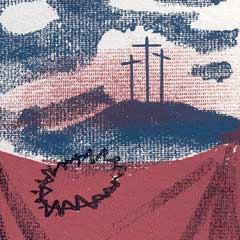
 GREECE
GREECE